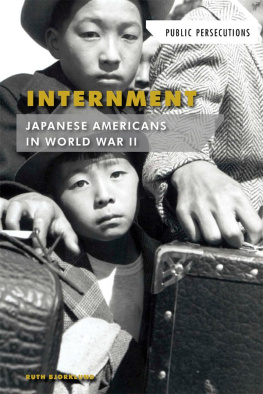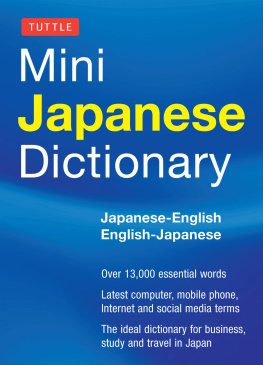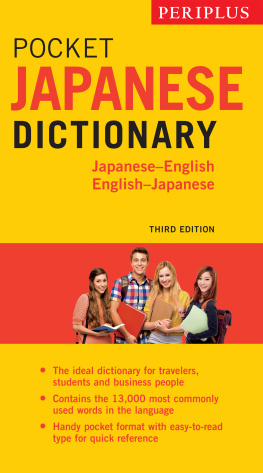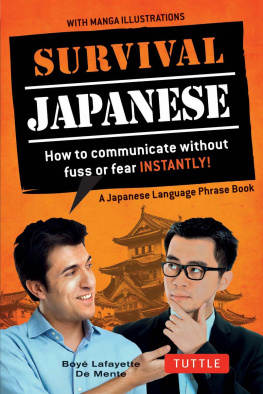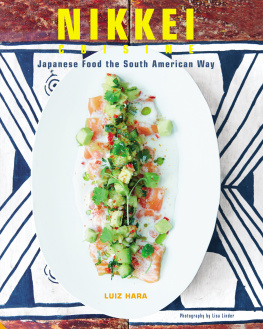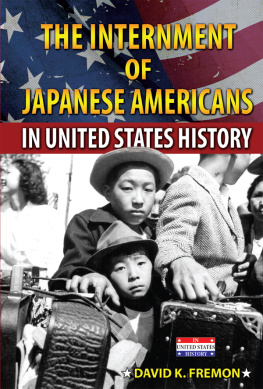Published by
Stone Bridge Press
P.O. Box 8208
Berkeley, CA 94707
TEL 510-524-8732
The translations of the nursery rhymes appearing on page 43, Rabbit (Usagi) and A Rolling Acorn (Donguri korokoro), words by Nagayoshi Aoki and music by Tadashi Yanada, appear courtesy Ayako Egawa. These rhymes and others can be found on Lisa Yannuccis Web site, Mama Lisas World (www.mamalisa.com).
All photos supplied by the author except where noted.
Text 2004, 2015 Gil Asakawa.
Cover and text design by Linda Ronan.
Second edition, 2015.
All rights reserved.
No part of this book may be reproduced in any form without permission from the publisher.
Printed in the United States of America.
LIBRARY OF CONGRESS CATALOGING-IN-PUBLICATION DATA AVAILABLE.
P-ISBN 978-1-61172-0-228
E-ISBN 978-1-61172-9-146
Preface to the Second Edition
Since the first edition of this book was released in 2004, Ive been to Japan four times, and Ive become much more involved in the pan-Asian community, both in Colorado where I live, and nationally. That means that Im becoming both more Japanese and more Asian American simultaneously. I think thats how many Asian Americans and Pacific Islanders (AAPI) feel: proudly rooted in the culture of their families origins and at the same time aware of the growing combined presence of the many AAPI communities that are thriving throughout the United States.
For this second edition of Being Japanese American, Ive added content (to use the parlance of the digital world, in which I make my living) that focuses on JAs and AAPIs online, especially through social media, which was just being invented when Being JA was originally published. Ive also written a section on how to keep up with news about Japan, which is also something thats greatly enabled by the Internet.
Because of my recent trips to Japan with my wife Erin Yoshimura (we werent married when the book was published), I feel more passionately than ever that Japanese Americans should visit Japan at least once. It can be a life-changing, identity-affirming journey to discover your roots. You dont even have to visit family if youre nervous about meeting a bunch of foreign relatives. But just going to Japan and being surrounded by, well, Japanese people, will give you a renewed perspective on who you are in America. And I hope youll find that you feel an almost indescribable sense of coming home when you land in Japan and see that so much of that countrys culture and traditions are familiar to you, even through filters of generations and assimilation into American society.
The past decade has been one long coming-out party for Asian Americans as a whole, if not quite so for Japanese Americans as a group. Its as if weve found our collective voice and made cultural impacts everywhere, from Hollywood to social media, from K-pop (yes, so J-pop got overtaken as the next big thing in the past decade) to the explosion of popularity in almost all Asian cuisines in the U.S., including not just sushi for Japanese food but, these days, hipster ramen. Anime continues to influence new generations of American otaku, or animation fans, who ultimately want to visit or study in Japan.
Social media have exploded within the past decade, and Asian Americans have rocked the online world. Social media have made it easier to solicit input from JAs across the U.S. and Canada to include as marginaliaI simply put an online survey form on my blog for readers to fill out, and I got the word out on Twitter and Facebook.
But the most important fact of the past ten years for the AAPI community is that, as a group, we have become the fastest-growing segment of the population in the United States. The media have made a lot of noise about Hispanics and how important they are to elections, but AAPIs will soon be an equally important and even more influential demographic for politicians to pay attention to. According to a 2013 Nielsen report on Asian American consumers, The Asian American community continues to be the fastest-growing multicultural segment in the U.S., with a current population of nearly 19 million. This represents a growth rate of almost 58% from 2000 to 2013, mainly spurred by immigration.
No wonder that newspapers before and after the 2014 election began running stories about how Asian Americans vote.
Although it wasnt a JA news story, the March 11, 2011 earthquake and tsunami in northeast Japan stirred up negative emotions that affected Japanese Americans. The disaster even sparked an anti-Japanese backlash that claimed the earthquake and tsunami and the meltdown at the Fukushima nuclear power plant were somehow revenge for the Japanese attack on Pearl Harbor that drew the United States into World War II. But these ignorant, racist messages brought out many more people who defended Japan.
Some other things have changed since 2004 in my own language.
For one, Ive chosen to no longer use the term hapa for mixed-race people. Although the term is more commonly used than ever, its origins are as a racial slur, and Ive met too many mixed-race people of different ethnicities who find the term offensive. I believe that impact is ultimately more important that intent, and though I would certainly never intend hapa as a racist term, Im fine with just saying mixed race.
The subtitle of this book, as well as my earlier text and any stories submitted by mixedrace JAs who use hapa will remain as-is, but for now, Im using mixed race in new text. I use mixed race in my blog too, and in a February 2015 post titled What Are Words Worth: Hapa, Hafu or Mixed-Race? I explained why. That post has generated a long and thoughtful conversation with readers on my blog and on Facebook, so the topic resonates. My guess is that in the future the use of hapa will become so commonplace that negative perceptions will fade. But for now, mixed race feels right to me.
And although there still is no consensus among Asian Americans, I now use Asian Americans and Pacific Islanders or Asian American Pacific Islanders or just AAPI to describe our multifaceted community. Back in 2004 I used Asian Pacific Americans or APA. Some people and organizations still do, but many now use AAPI, including President Obama and his White House Initiative on AAPIs. Thats good enough for me.
Gil Asakawa
Spring 2015
Introduction
I was a banana.
Thats what Ive been told by people who knowJapanese Americans whove been involved in community activism all their lives. Even though I was born in Japan, I havent studied my roots in Japanese culture or even the history of Japanese Americans all my life. I didnt know who Vincent Chin was, or about the No-No Boys. Because I didnt know about the history, I was told I was a banana: Yellow on the outside, white on the inside.
Its true that I grew up among Caucasian friendsespecially after my family moved to the Statesand I wasnt involved politically or socially with Asians or Asian causes. But I like to think of myself as more than just a fruit. Im really a dessert. Im a banana split, with both my yellow and white sides sharing equal attention.
I know more about Japan than some other Japanese Americans, for one thing. Since I lived there as a kid, I have vivid memories of Japan (albeit the Japan of thirty-five years ago, before the first McDonalds or KFC stormed the Yamato shores), and feel at homesort ofwhen I visit. Ive also immersed myself in Japanese history and pop culture in recent years, and I feel Im as much a Japanese as I am an American.




